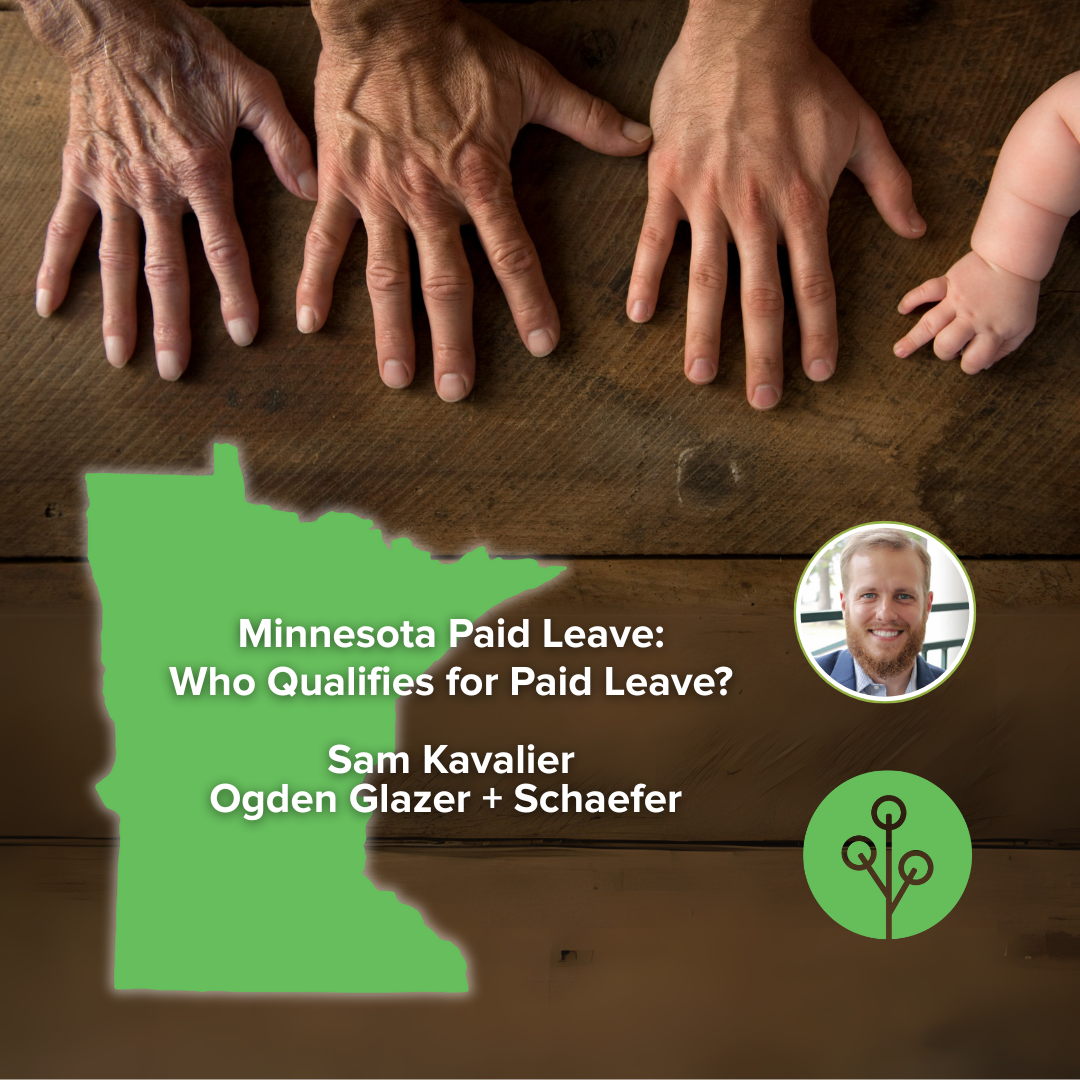As hinted in a previous blog post, here comes the first part in a series about Minnesota Paid Leave. As a quick recap, the State of Minnesota is in the process of rolling out a paid leave program, with benefits available starting January 1, 2026. The Minnesota Department of Employment and Economic Develop (DEED) will administer a benefit program to Minnesota employees of Minnesota employers. The program will be funded from a payroll tax, similar to unemployment insurance. Tied up in determining who is participating in the program is a matter of: (1) whether the employer is a qualifying employer and (2) whether the employee is a qualifying employee.
For the first part, most Minnesota employers are required to participate in Minnesota Paid Leave. The statute defines “Employer” pretty broadly to include essentially any entity or organization that has an employee engaged in “covered employment,” state agencies, and municipal or local governments. Excluded from the list of potential employers are the federal government, tribal governments, and self-employed individuals.
For the second part, employees generally qualify for Minnesota Paid Leave, so long as they are engaged in “covered employment,” which means 50% or more of their work is performed in Minnesota in a calendar year. If 50% or more of their work is not performed in Minnesota (or in any other state) in a calendar year, and if the employee resides in Minnesota for 50% or more of the time, then it is still “covered employment.”
Finally, there is an exception that combines a little bit of the first and second part: seasonal employees. Seasonal employees do not qualify for Minnesota Paid Leave. However, the statute defines a “seasonal employee” narrower than you might expect. According to the statute, seasonal employees are employees that work in hospitality no more than 150 days during a 1-year period for certain employers. These certain employers must be seasonal in nature, which means making at least 2/3 of their average receipts in a 6-month period, with no more than 1/3 of their average receipts in the other 6 months of the year. To recap, that means for an employee to be a “seasonal employee,” not only do they need to work seasonally for their employer, but they need to work in hospitality, and the employer needs to be a seasonal employer.
With the talk around employers and employees covered under Minnesota Paid Leave, there are 3 edge cases that seem most likely to cause confusion and complexity:
- Border communities. In communities that sit on the border of Minnesota and neighboring states, it might be challenging for employers to determine whether employees are engaged in “covered employment.” It is easy enough if the work sites are in one state, but if the work sites straddle two states (or in the case of communities like Sioux Fall or La Crosse, maybe even 3 states), then it could be hard to determine in which states (if any) 50% or more of the employee’s work is performed.
- Remote employees. For employees working remotely in Minnesota 50% or more of the year, even for employers not otherwise located in Minnesota, the statute suggests that the employee is engaged in “covered employment.”
- Traveling employees. For employees that travel a lot for work, such that 50% of their work in a calendar year is not performed in any one state, then whether their employment is “covered employment” will depend upon whether the employee resided in Minnesota for at least 50% of the year.
Thanks for reading! Be on the lookout for subsequent parts of the series.
Also register for an upcoming webinar with Attorney Sam Kavalier and Popins LLC‘s Jackie Cook:
More details at (1) Preparing for Minnesota Paid Leave: Legal and Operational Perspectives | LinkedIn

